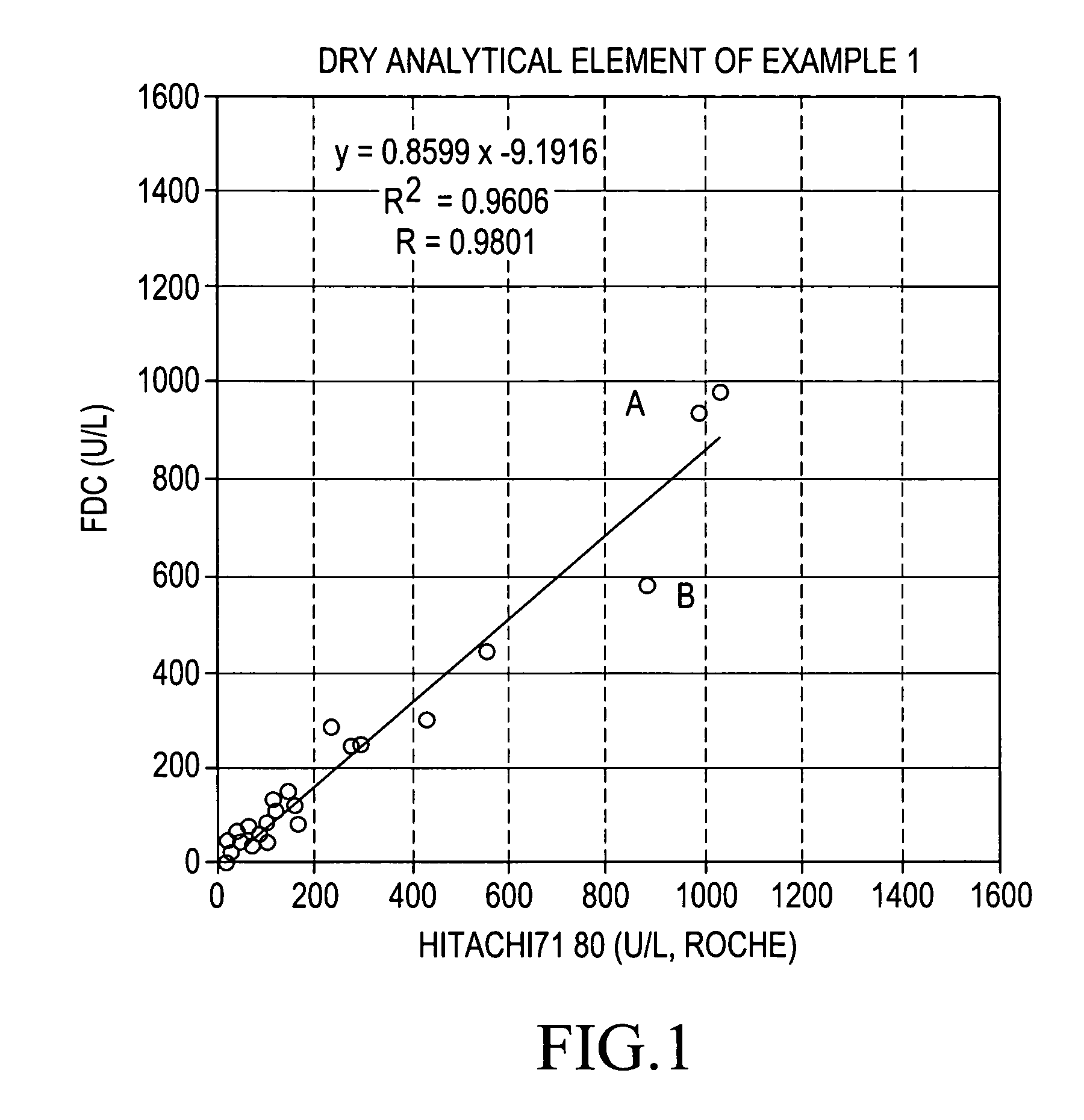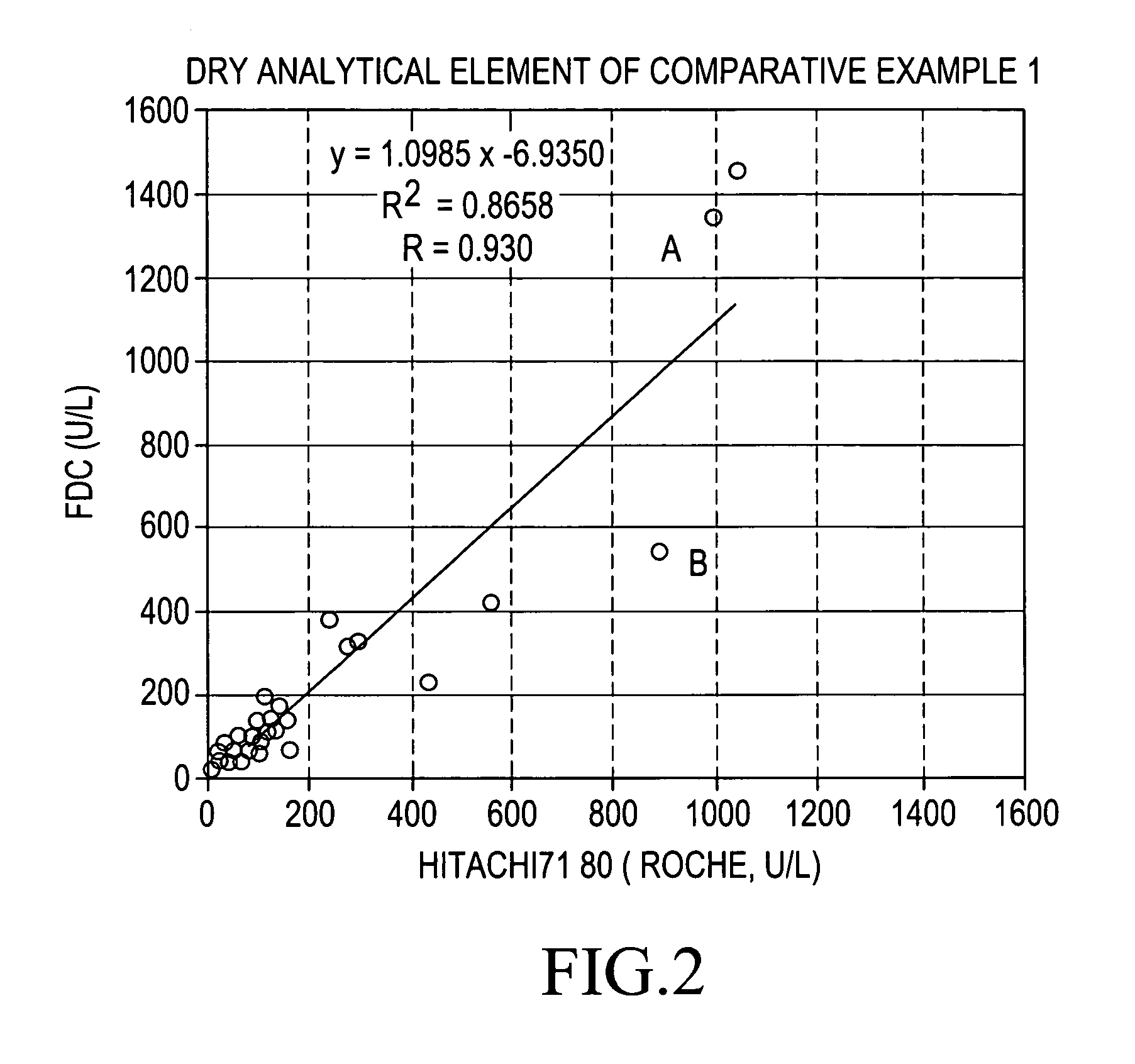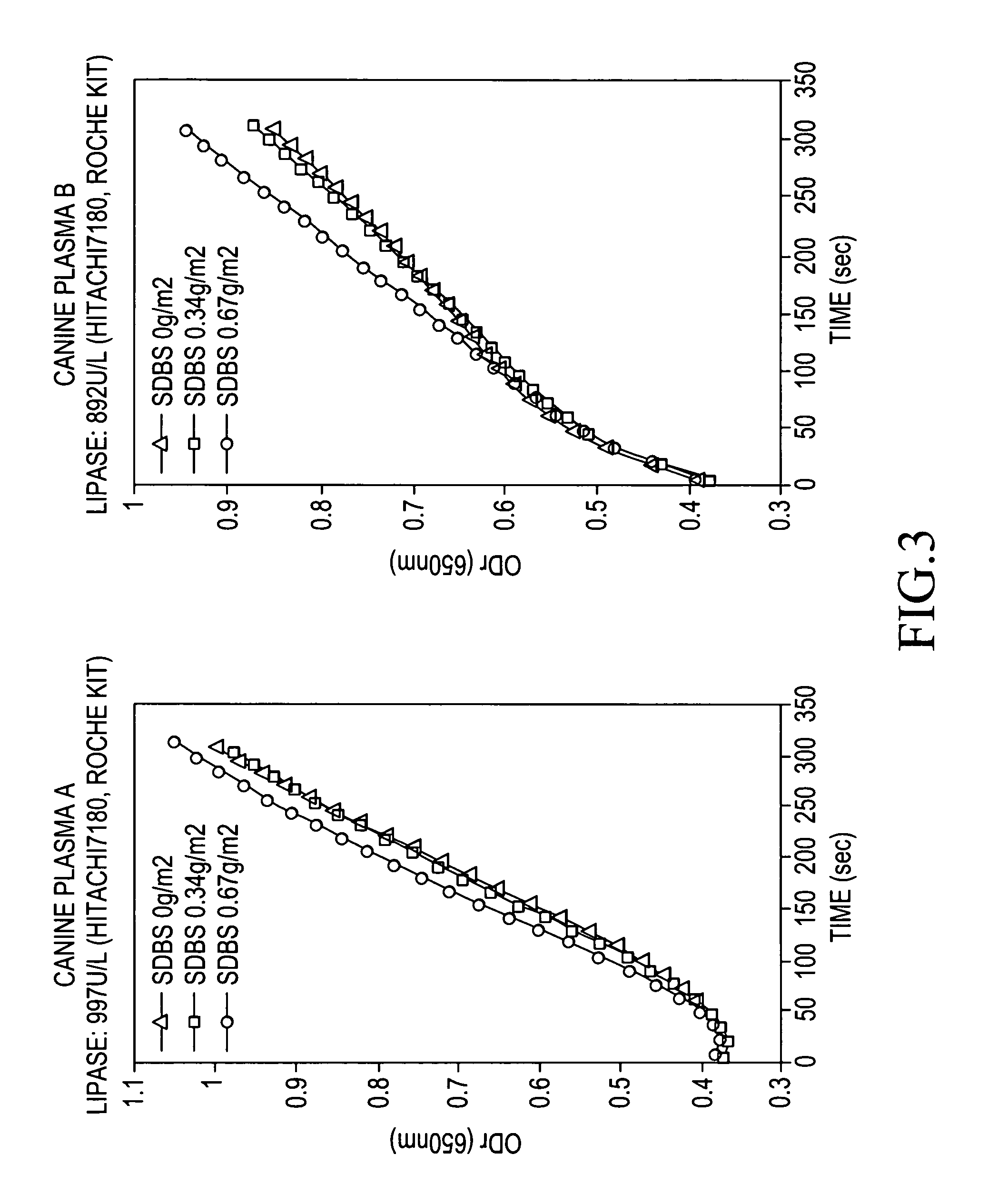Dry analytical element for lipase measurement
a technology of lipase activity and analytical element, which is applied in the direction of biological material analysis, instruments, biochemistry apparatus and processes, etc., can solve the problems of high probability of substrate incorporated into a dry analytical element to degrade, difficulty in producing such elements, etc., and achieves improved adhesion, improved measurement precision and intensity, and strengthened support
- Summary
- Abstract
- Description
- Claims
- Application Information
AI Technical Summary
Benefits of technology
Problems solved by technology
Method used
Image
Examples
example 1
Preparation of a Dry Analytical Element Comprising Linear Sodium Dodecylbenzenesulfonate
(1) Addition of a Glycerine Coloring Reagent:
[0081]A reagent of the following composition was coated as an aqueous solution to a gelatin-undercoated polyethylene terephthalate film having a thickness of 180 μm which was smooth, colorless, and transparent, followed by drying. Subsequently, water was uniformly supplied to the film such that the film became wet. Tricot knitted fabric prepared by knitting (36 gauge) with polyethylene terephthalate spun yarn (corresponding to 50 deniers) was laminated thereon by light pressurization. The gelatin was solidified at a drying temperature of 20° C., followed by drying at 45° C. In addition, the coating solution comprising a pH buffer (PIPES) used was adjusted to have a pH of 6 with a 1 N—NaOH aqueous solution.
Gelatin: 12 g / m2
PIPES (Dojindo Laboratories): 22 g / m2
Magnesium chloride (Wako Pure Chemical Industries, Ltd.): 0.52 g / m2
ATP-2 sodium salt (Orienta...
example 2
Influence of Amounts of Sodium Dodecylbenzenesulfonate and Colipase
[0087]Analysis elements were produced by the same production method as that described in Example 1 with the exception that the amounts of sodium dodecylbenzenesulfonate and colipase were changed. A multianalyte correlation was examined using forty-six canine analytes. The results are shown in Table 1. When a lipase analysis slide, to which sodium dodecylbenzenesulfonate had been added, was compared with a lipase analysis slide, to which such sodium dodecylbenzenesulfonate had not been added, it was reconfirmed that a favorable correlation coefficient was obtained when such reagents were used within the amount range as shown in Table 1.
[0088]
TABLE 1Sodium dodecyl-PigbenzenesulfonatecolipaseCorrelationSlide No.(g / m2)(g / m2)coefficient (R)2-10.670.050.9801(same as in Example 1)2-20.670.10.97442-30.670.180.98192-41.00.050.97852-51.00.10.97602-61.00.180.97652-71.340.050.97542-81.340.10.97522-91.340.180.97862-10 (same as in...
example 3
Measurement of Pancreatic Lipase Reaction Time Course by Addition of Sodium Dodecylbenzenesulfonate
[0089]Dry analytical elements for measurement of pancreatic lipase were produced by the same production method as those described in Examples 1 and 2 with the exception that the amount of sodium dodecylbenzenesulfonate (abbreviated as SDBS in FIGS. 3 and 4) added was changed. “3-1” in Table 2 indicates Comparative example 2.
[0090]
TABLE 2Sodium dodecyl-benzenesulfonatePig colipaseSlide No.(g / m2)(g / m2)3-100.1(Comparative example 2)3-20.340.13-30.670.1
Measurement:
[0091]Two analytes (A and B), to which a positive error and a negative error had been imparted, were selected from the multianalyte correlation of Comparative example 1. Measurement was carried out using the pancreatic lipase dry analytical element produced in Example 3, and a comparison was then made on their reaction time courses. As the analytes A and B, the same analytes as those described in the aforementioned multianalyte c...
PUM
| Property | Measurement | Unit |
|---|---|---|
| thickness | aaaaa | aaaaa |
| thickness | aaaaa | aaaaa |
| thickness | aaaaa | aaaaa |
Abstract
Description
Claims
Application Information
 Login to View More
Login to View More - R&D
- Intellectual Property
- Life Sciences
- Materials
- Tech Scout
- Unparalleled Data Quality
- Higher Quality Content
- 60% Fewer Hallucinations
Browse by: Latest US Patents, China's latest patents, Technical Efficacy Thesaurus, Application Domain, Technology Topic, Popular Technical Reports.
© 2025 PatSnap. All rights reserved.Legal|Privacy policy|Modern Slavery Act Transparency Statement|Sitemap|About US| Contact US: help@patsnap.com



